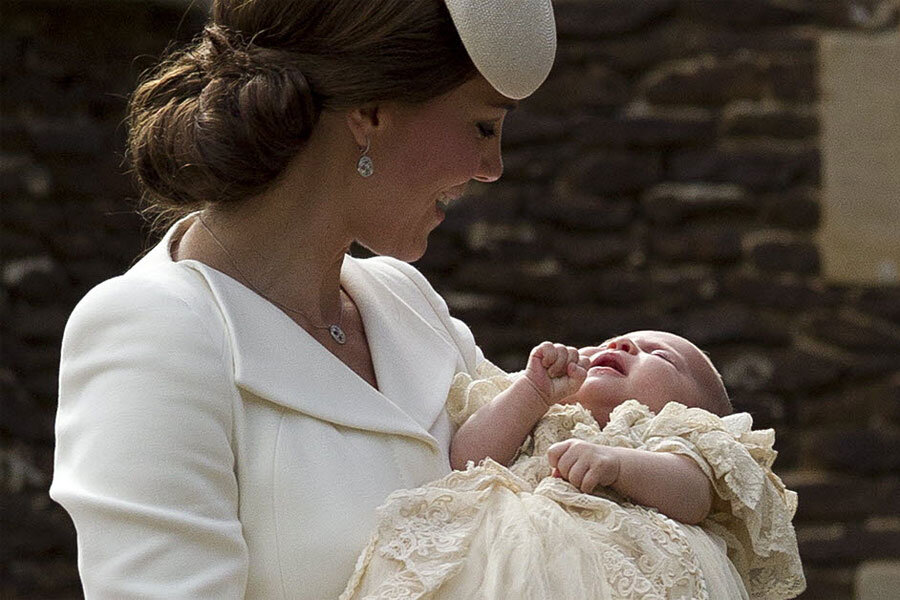Princess Charlotte to have five godparents, none of them royals
Loading...
England’s newest royal addition has a grand total of five godparents, but no fellow royals.
Princess Charlotte was born to much fanfare and celebration on May 2. She is the second child and first daughter of the Duke and Duchess of Cambridge, better known as Prince William and Princess Kate.
Charlotte’s christening took place Sunday, and, as expected, the names of her godparents were released the morning of the ceremony. The five included William’s cousin Laura Fellowes, Kate’s cousin Adam Middleton, and three of the couple’s friends.
How does this baptismal lineup compare to that of the other royals?
Charlotte’s older brother, Prince George, has seven godparents. As the third in line to the throne after his father Prince William and his grandfather Crown Prince Charles, he holds the special distinction of one day becoming Supreme Governor of the Church of England, a role that is largely symbolic but carries a high profile.
George's seven godparents include a cousin of Prince William, other close friends of the couple, and only one royal.
A 2013 report by ABC News called this selection a “clear shift from tradition,” pointing out that the couple “largely shunned fellow royals as godparents” to George.
Prince William’s godparents include King Constantine of Greece, Princess Alexandra, Lady Ogilvy, the Duchess of Westminster, Lady Susan Hussey, Lord Romsey, and Sir Laurens van der Post. All are English nobility.
George and Charlotte’s more “normal” godparents could give some indication of the future of the monarchy, royal family commentator and writer Roya Nikkhah told ABC.
“[William’s] set down the bar and that’s how I think we’ll see the royal family develop. Wanting to bring in a bit more family life into the way things are done in the monarchy.”
But not all things have changed.
Princess Charlotte was christened in a replica of the christening gown made for Queen Victoria’s eldest daughter in 1841. The original gown has been worn by all royal babies since then, until being deemed too fragile in 2008.
The princess was baptized with two crown jewels that are usually on display at the Tower of London. The Lily Font, created for Queen Victoria’s oldest daughter’s christening in 1841, will hold water from the River Jordan and the water will be poured from a solid silver ewer.
The Lily Font has been used in the christening of almost every royal baby since it was commissioned by Queen Victoria in 1841.
In keeping with tradition, the ceremony was conducted by the Archbishop of Canterbury and the gathering was limited to family and close friends. Queen Elizabeth II and her husband Prince Philip were both in attendance.
But in a new twist, the christening took place at St. Mary Magdalene church. On a sentimental note, Charlotte’s late grandmother, Diana, Princess of Wales, was christened here in 1961. On a historic note, most royal babies have been baptized in London. The princess's christening location is in stark contrast to the traditional venue at Buckingham Palace. Prince George was also christened in a more intimate ceremony at the Chapel Royal at St. James's Palace in London.






